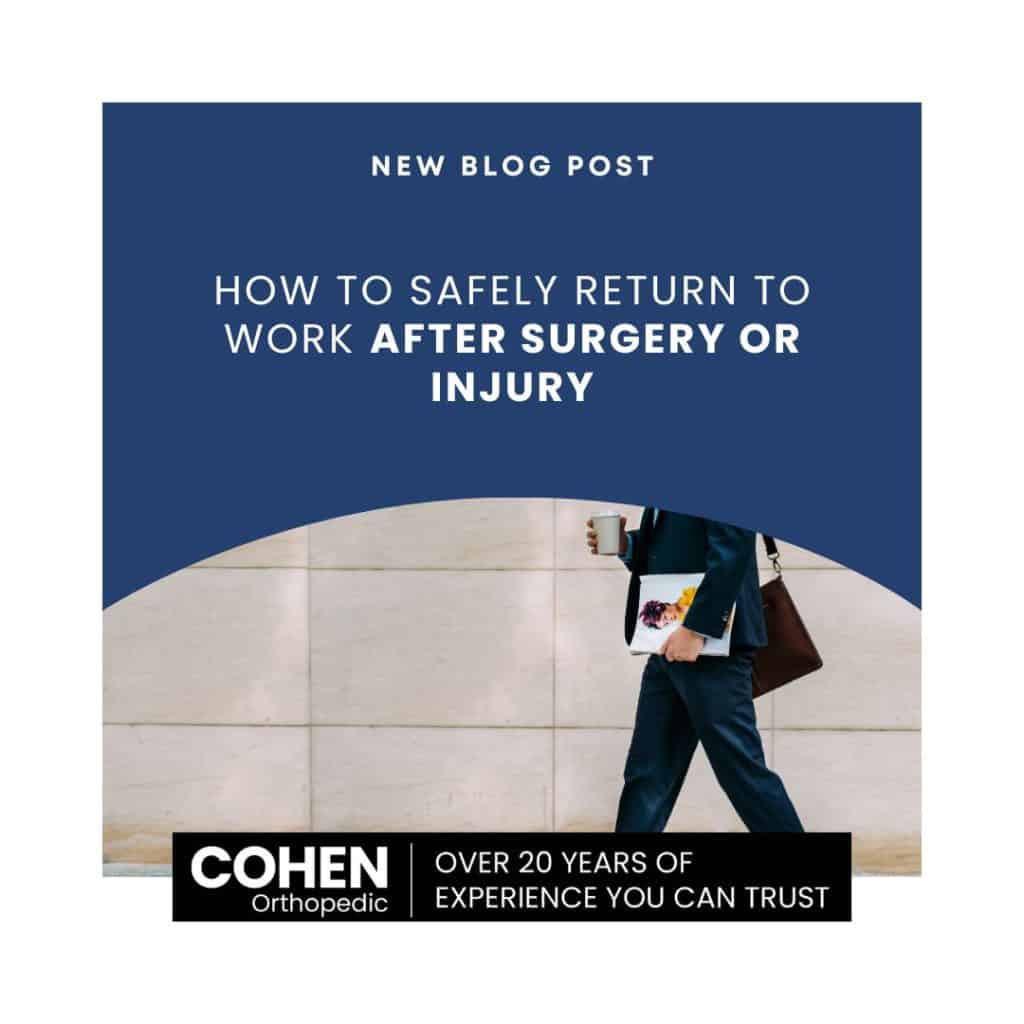How to Safely Return to Physical Activity After Surgery or Injury

Returning to physical activity after surgery or an injury can be both exciting and intimidating. Whether you’re recovering from a sports-related injury, surgery, or a long-term condition, it’s important to approach your rehabilitation with patience and care to ensure a safe and successful return to your regular activities. Rushing back too soon can put you at risk for re-injury, setbacks, or long-term complications. In this blog, we’ll discuss some essential guidelines to help you safely get back into physical activity after surgery or injury.
1. Consult Your Healthcare Provider
Before diving into any physical activity, always consult your healthcare provider or surgeon. They are your best resource for advice on when and how you can safely return to exercise. They’ll take into consideration your specific type of surgery or injury, the progress of your healing, and your general physical health. Your doctor may also provide recommendations for physical therapy or specialized exercises to support your recovery.
2. Start Slow and Gradual
Your body needs time to heal, so it’s crucial to ease back into physical activity slowly. Start with light, low-impact activities like walking, swimming, or stationary biking. Gradually increase the intensity and duration as your body responds positively and without pain. If you rush into high-impact activities or vigorous exercises, you risk overloading your healing tissues and muscles, leading to setbacks.
3. Follow a Structured Rehabilitation Plan
If your healthcare provider has recommended physical therapy, make sure to stick to the prescribed plan. Physical therapists design tailored programs to help restore function, strengthen muscles, and improve flexibility around the injured area. These rehab exercises are vital in building a foundation for a safe return to more strenuous activities.
Even after formal physical therapy ends, continue to focus on the exercises that support your recovery. Strengthening the muscles surrounding your injury or surgical site is key to reducing the risk of future problems.
4. Pay Attention to Pain
Pain is an important signal from your body. While some discomfort might occur as you resume activity, sharp or intense pain is a red flag. If you experience pain that doesn’t go away after rest or worsens with activity, stop immediately and consult with your doctor. Pushing through pain can lead to further injury or complications that could delay your recovery.
A good rule of thumb is the “no pain, no gain” myth doesn’t apply here. Instead, aim for gentle progress without exacerbating your pain or injury. Mild soreness or tightness after a workout is normal, but pain is a signal that something isn’t right.
5. Focus on Mobility and Flexibility
After surgery or injury, flexibility and mobility might be limited due to stiffness or muscle imbalances. Incorporating gentle stretching and mobility exercises can help regain flexibility and improve joint function. Stretching regularly (after your body is warmed up) can prevent stiffness and reduce the chances of further injury.
Be sure to follow stretches that are specifically recommended for your condition. Some stretches or exercises may not be appropriate right away, so it’s important to know what’s safe for your stage of recovery.
6. Use Proper Form and Technique
When you return to physical activity, focus on maintaining proper form to avoid unnecessary stress on your injured or surgically repaired area. Using incorrect posture or movement patterns can lead to compensations that may strain other parts of the body, causing new injuries. Whether you’re lifting weights, running, or doing yoga, always prioritize good technique and proper body alignment.
Consider working with a coach, personal trainer, or physical therapist to ensure you’re performing exercises correctly. They can provide feedback on your form and make necessary adjustments.
7. Listen to Your Body and Be Patient
Patience is key to a safe return to physical activity. Understand that healing takes time, and it’s okay to not jump back to your pre-injury level of fitness right away. Set realistic goals for yourself and give your body the time it needs to heal fully. If you push too hard, too soon, you may risk injury or prolong your recovery.
Track your progress, but don’t rush it. Celebrate small victories, like being able to walk pain-free for longer distances, or gradually increasing your exercise intensity. Acknowledging these milestones can help you stay motivated and committed to your recovery.
8. Hydrate and Fuel Your Body
Proper nutrition and hydration play a significant role in your recovery. Your body needs the right fuel to rebuild and strengthen tissues, especially after surgery or injury. Ensure that you’re eating a balanced diet rich in protein, healthy fats, and complex carbohydrates to support muscle repair and overall healing. Don’t forget about hydration—staying well-hydrated helps improve joint mobility, muscle function, and recovery.
9. Cross-Train to Avoid Overuse
As you reintroduce physical activity, consider cross-training to avoid putting too much strain on any one part of your body. For example, if you’re recovering from a leg injury, alternate between walking, cycling, and swimming to avoid overloading your muscles. Cross-training can help you maintain fitness levels while allowing different muscles and joints to recover.
10. Set Realistic Goals
It’s easy to get frustrated when you can’t jump right back into your previous activity levels. However, setting realistic and achievable goals will help you stay on track and keep a positive mindset. Whether it’s aiming for a certain number of steps per day, completing a set number of gentle stretches, or gradually adding weight to your routine, having a structured plan with specific goals will make your return to physical activity feel more manageable.
11. Consider Supportive Devices (If Necessary)
Depending on the type of surgery or injury you’ve had, you may benefit from using supportive devices like braces, wraps, or orthotics while you’re regaining strength and mobility. These devices can provide added stability, reduce strain on injured areas, and help you feel more confident during physical activity. Consult with your healthcare provider about what may be appropriate for you.
Conclusion
Returning to physical activity after surgery or an injury is a process that requires time, patience, and care. By consulting with your healthcare provider, taking gradual steps, and focusing on your body’s signals, you can minimize the risk of re-injury and ensure a safer recovery. Remember that healing is a journey, not a race, and your body will thank you for listening to it along the way.
Every step forward, no matter how small, is progress. Stay positive, be patient, and celebrate your successes on the road to recovery.










